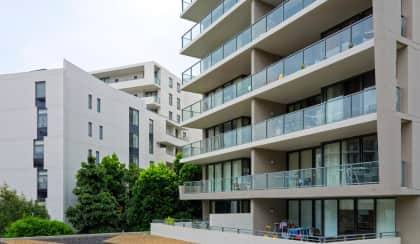Can you charge an EV in a strata complex? It’s complicated
Strata residences such as apartment buildings and unit dwellings, ill-equipped to deal with a mass uptake of electric vehicle charging, could slow the country’s progress in transitioning to green tech.

Electric vehicles (EVs) have emerged as a promising solution to the pressing need to combat climate change and reduce carbon emissions on a global scale. Across Australia, drivers are looking to cut down on their petrol costs while contributing to environmental sustainability.
But as the Strata Community Association (SCA) reported in a new research paper, those efforts are being stymied for approximately 6 million people who live in strata residences, which are largely unable to support EV charging on a large scale.
The second of two reports on EV integration into strata communities, this edition focuses on the challenges at hand so that communities and the government can get on the front foot before multi-dwelling builds become a fly in the ointment of EV uptake.
The EV future is now
As the SCA reported, Australians currently own approximately 83,000 EVs, which represents a huge leap from the 44,000 EVs on Australian roads at the beginning of 2022. By the end of the year, the country is predicted to be home to 100,000 EVs, given that the rate at which they are being purchased has increased by 86 per cent over the past 12 months. Globally, electric vehicle sales are expected to grow by 35 per cent by the end of 2023.
The number of people living in strata communities is also expected to increase, especially as states look at incentivising high-density living in Australia’s capitals as part of the solution to the current housing crisis. The good news is that the National Construction Code requires that new buildings are created to be EV-ready from 1 October 2023. However, it’s in the vast landscapes of older buildings where the challenges lie.
Failed by old electrics
One of the biggest barriers to EV integration is that all older buildings in Australia have not been built with the level of electrical infrastructure sufficient to support the additional load that EV charging creates. The retrofitting process can be costly, and those who are not actively planning on owning an EV may not see the value in upgrading the systems. It can then be difficult to get strata boards to agree to an electrical overhaul, given that in most jurisdictions, a majority vote is needed to pass such a decision.
The temptation for many will be to allow residents to access EV charging on something like a first-come, first-served basis, where owners who wish to charge EVs pay the cost to install electrical metering and any charger they might need for their vehicle, until the building’s grid is at capacity, making it untenable for anyone else to add to the load.
But the SCA warned that this introduces troubling equity issues into buildings while also hurting owners’ long-term investments.
The body noted that as more new buildings with EV capabilities hit the market, older buildings that don’t support the tech will be at a disadvantage and face “the prospect of lower valuations for their properties”.
No way forward without government incentives
Primarily, SCA is pushing for the government to create funding programs to establish baseline backbone infrastructure capability in all existing strata buildings. And they’re urging strata bodies to seriously consider planning now for future needs.
SCA’s national vice president and chair of its EV taskforce, Josh Baldwin, said he hopes the report will stimulate proactive discussions across the government and among those in positions to move the needle.
“The challenges explored in the report highlight the urgent need for comprehensive support for EV planning and infrastructure development in strata buildings,” he said.
“By equipping our strata communities with efficient and accessible EV infrastructure, we can further encourage EV adoption and position the strata industry as a leader in sustainable development”.
SCA national president Chris Duggan urged strata stakeholders, government bodies and industry experts to take note and look for collaborative opportunities to work on this issue.
“We call upon all parties to join together and explore innovative solutions that will pave the way for a pragmatic approach and more sustainable future for strata communities everywhere,” Mr Duggan said.
“Together, we can awaken a sleeping giant and unlock the unlimited potential of strata to create thriving, sustainable communities, and set a global standard for environmentally conscious living.”

